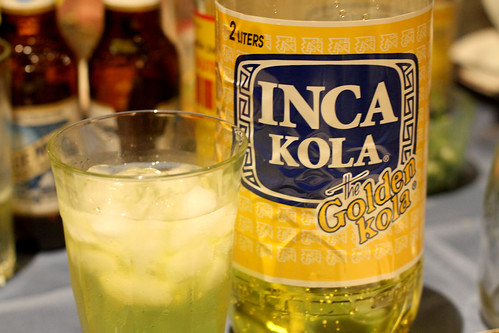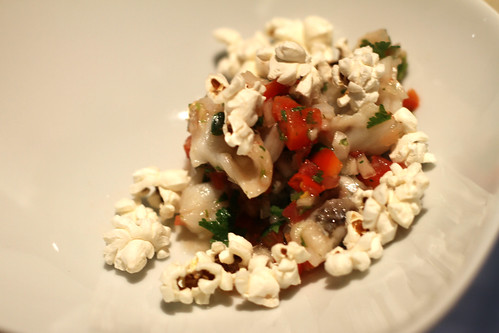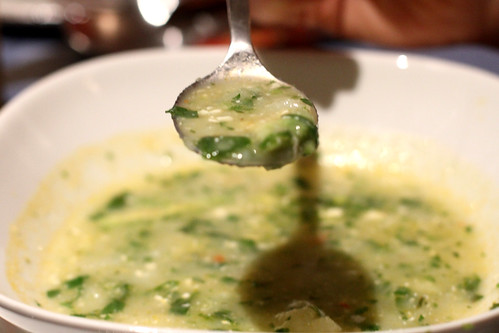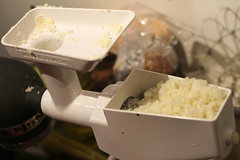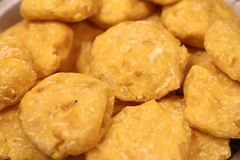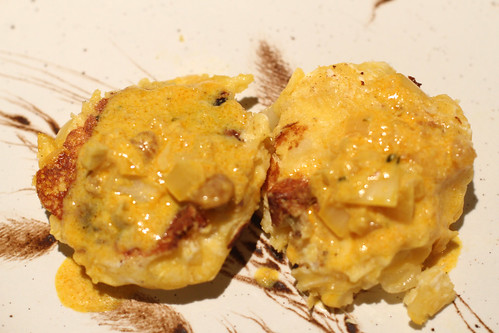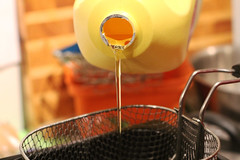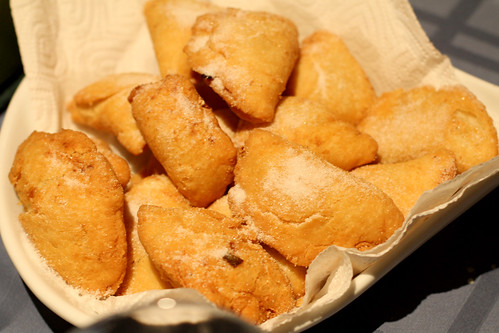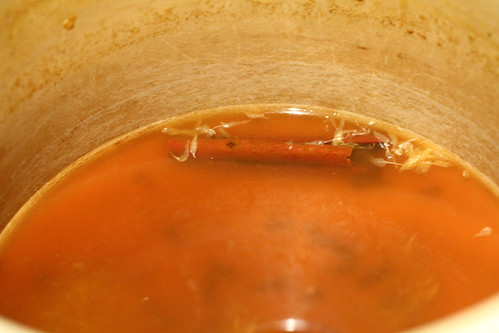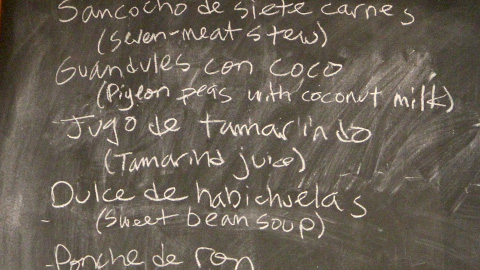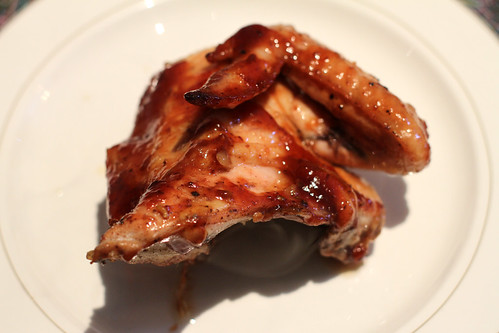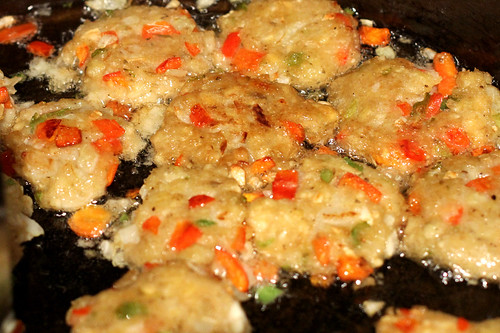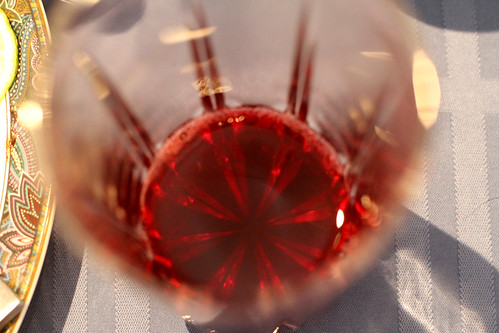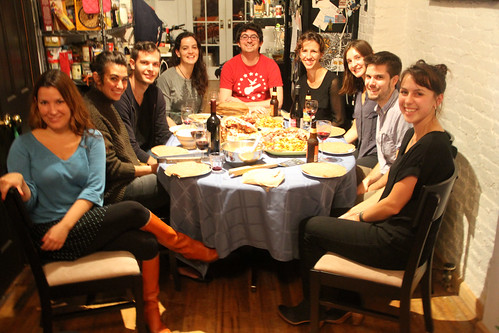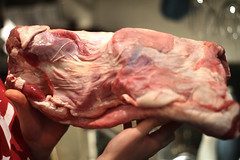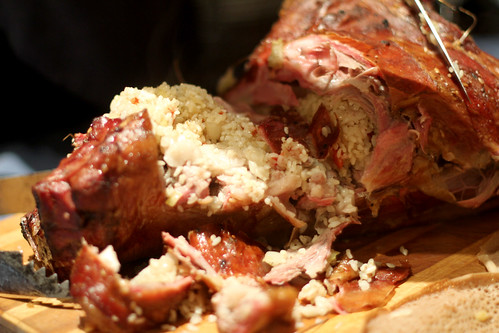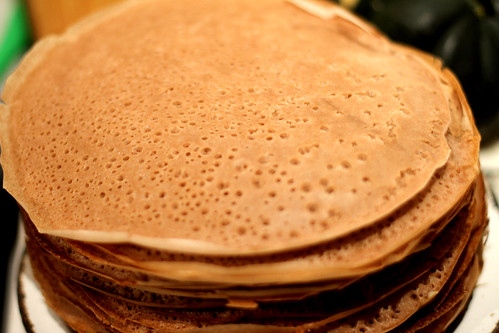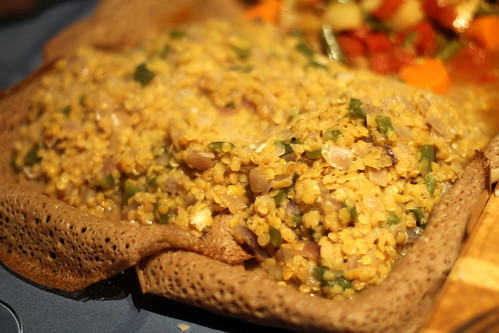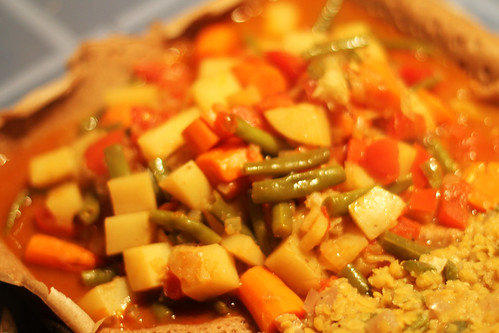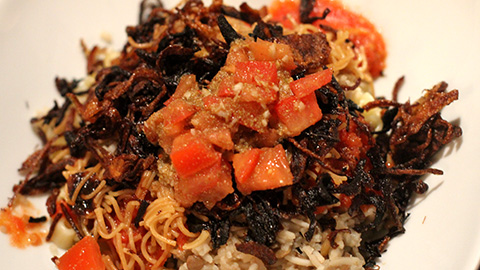 For 12 millennia, people in what's now Egypt have successfully built civilizations around agriculture in a virtually rain-free desert environment. While there's plenty of evidence that they grew fruits and vegetables, the annual cycle of the Nile's flooding made it much easier to grow plants that could thrive on their own in properly inundated soil — which means grains and legumes were much easier than relatively more fickle fruits and vegetables. So, it should be no surprise that our meal was very carb-heavy! (Vegetarian and nearly vegan, too.)
For 12 millennia, people in what's now Egypt have successfully built civilizations around agriculture in a virtually rain-free desert environment. While there's plenty of evidence that they grew fruits and vegetables, the annual cycle of the Nile's flooding made it much easier to grow plants that could thrive on their own in properly inundated soil — which means grains and legumes were much easier than relatively more fickle fruits and vegetables. So, it should be no surprise that our meal was very carb-heavy! (Vegetarian and nearly vegan, too.)

Joining us for our starch-fueled adventure were Shazna, Ron, Nadia, Jessica, Sophie, Angad, Melanie, and Catherine.
Ful medames | Fava bean stew | Recipe

It's apparently a common saying that ful medames is "the rich man's breakfast, the shopkeeper's lunch, and the poor man's dinner." Ful is a popular food around the Middle East, but it's really a core part of the Egyptian diet.
It's made from fava beans, and the same inner skin that makes it a very labor-intensive vegetable to eat fresh renders it a particularly long-cooking dried legume. In fact, I soaked it for twelve hours in warm water with vinegar, then simmered it for four or five hours, and I still think it could have cooked longer to be more tender. No wonder a lot of people buy the cooked beans in a can and then gussy them up for serving. It was tough to find a good recipe that started from dried beans.
As far as the seasoning, there are many approaches, all of them delicious. I tried a pretty straightforward version, eliminating the tahini from the recipe, and going a little heavier on the garlic.
Aish badali | Whole wheat flatbread | Recipe
The perfect accompaniment for this mushy, tangy, rich dish is a fluffy, toasty, lightly nutty loaf of what is possibly the world's oldest form of bread. (Maybe this is what the Israelites were trying to bake when they fled from Pharaoh, and what we now memorialize as matzo?) The standard Arabic word for bread is khubz, but in Egypt they call it aish, the word for "life." It's heavily subsidized, and its quality and availability remains a major political issue.
Happily, this is one of the easier breads to make, and also pretty healthy given that it's made entirely out of whole wheat. What's fun is that it only takes a few minutes to bake, puffing up rather dramatically in an oven as hot as you can make it. Unfortunately, mine tops out at around 500°F, which isn't hot enough to shock the crust so that you get the classic pocket.
Koshari | Rice, pasta, and lentils with tomato sauce and crisp-fried onions | Recipe

This explosion of complex sugars is Egypt's national dish. In fact, it's been credited with fueling the recent revolution. So how do you bring a taste of Tahrir to your table?
Start with a layer of little pasta — elbow macaroni is OK but even better are quarter-inch-long tubes sometimes seen as ditalini. On top of that put rice (a relative newcomer to Egypt, cultivated since the 7th century) which has been steamed with previously-cooked and lightly fried brown lentils. Then put a layer of vermicelli, essentially little pieces of super-thin pasta, which has been fried and then boiled. Pour on a moderate helping of a basic vinegar-garlic-tomato sauce (way late in the game as a New World food!). Cover generously with paper-thin onion slices fried to within a whisper of burnt. Then top off with a salsa of fresh tomato, raw garlic, vinegar, and more cumin than you probably realized you could actually cook with.
I'm pretty sure that in the time it took me to write that paragraph, you'd have wolfed down half your bowl. It's such an oddly compelling dish, a mutt of starch and tang which laps at your taste buds and nuzzles contently in your stomach. Not surprisingly, given all the steps that go into making all the parts of the dish, koshari is rarely made in the Egyptian home, as it's cheap enough to eat out anyway.
Whom should we thank for this dish? It may surprise you to know that the British are generally given credit for having brought a similarly-named rice-and-lentil combination from India, apparently because it's something they could reliably eat without getting food poisoning!
Quick-pickled eggplant | Recipe
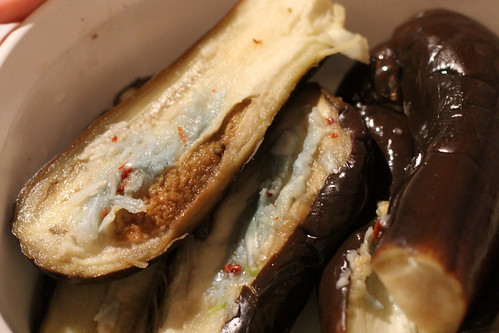
Fresh veggies played a secondary role in ancient Egypt, and the same is true in the modern one too. The most appropriate would have been molokhiya, a leafy green that's bizarrely translated as "Jew's Mallow," and makes for a stew that's goopier than okra. But that wouldn't have worked with koshari, so I went with this good-looking quick-pickle recipe for eggplant. Now, I wasn't able to get the sort of really skinny and small eggplant they call for, Italian eggplant was the best I could do. All in all the dish was underwhelming, and also a little offputting — any guess why the garlic turned blue when stuffed inside the eggplant?!?
Shai | Mint tea
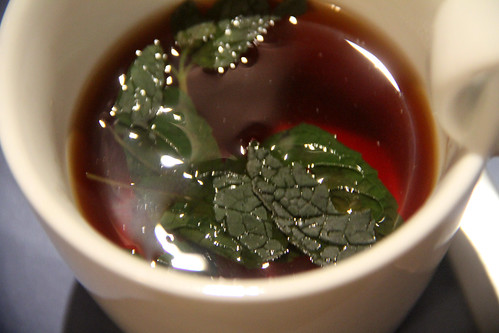
Now, tea is a much more recent phenomenon in Egypt than most of these other staples, but deeply incorporated into life all the same. It's often steeped with mint. Both very strong and relatively mild versions of tea are brewed; I guess we kinda ended up in the middle.
Umm ali | Puff-pastry bread pudding with nuts | Recipe

Why this dessert is called "Ali's Mother" is a matter of debate. But there's no denying that this was one tasty end to the meal. For all the richness, with puff pastry, condensed milk, three types of nuts and coconut, it was pleasingly not too sweet, with no added sugar other than that in the condensed milk. (I even used just milk rather than cream as called for, and we didn't miss any of the extra richness.)
In terms of awesomeness to effort, this is one of the highest ranking desserts yet for United Noshes! Really, provided that you plan ahead — or are a culinary savant and happen to have ingredients on hand — it takes little effort to whip it up, and even less to clean because your guests will be licking the dish.
---
And that does it for United Noshes in 2012! It's been our first full calendar year, with 34 Noshes in five cities, over $9,600 raised (bringing us to over $12,300 total) for World Food Program USA, and a few hundred prior friends, friends-of-friends, and new friends served. We're soon heading off for a three-week trip to India over the holidays, where I fully expect to buy tons of spices and pack my already overburdened spice collection to overflowing.
Happy holidays and New Year! May it be filled with good cheer, and of course great food.

